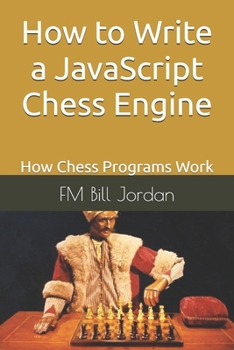How to Write a JavaScript Chess Engine: How Chess Programs Work
You do need to be an expert programmer to understand this book. The code is written as simply as possible. The code is designed to be simple even for intermediate and even novice programmers.
If you are not a programmer but are interested in chess, this book may be of interest.
The book includes annotations of the source code for a complete chess engine that the author has developed as a teaching tool. The complete source code is available at GitHub. The program can be edited with any text editor and run on a web page. You can alter the code and see if you can make it stronger.
The program is a derivative of my program referred to in my earlier book How to Write a BitBoard Chess Engine.
The engine is strong enough to beat most social players.
Features of the engine include: It can play a human or itself.It can load positions.It is reasonably fast.It displays the best line of play for both sides.Detects checkmate.Detects draws by repetition, 50 move rule, stalemate or reduction of material.EvaluationThe engine evaluates elements of a position, including: Material.Piece position.King safety.Pawn structure.Passed pawns etcSearchThe engine uses a standard alpha-beta minimax search including: Cut offs.Move ordering.History moves, Hash tables.Extensions.Reductions.Capture search.And much more...
Other books on computer chess include: The Joy of Chess Programming Think Like a ComputerOther books on computer chess programming include: How to Write a Chess Program.How to Write a Bitboard Chess Engine.Advanced Chess Programming.How to Write a Complex Chess Engine.How to Write a Simple Chess Neural Network.
The author is a FIDE chess master and national senior chess champion in addition to being a chess programming enthusiast. He was also an IT trainer for 10 years, teaching programming languages such as C++ to adults.





